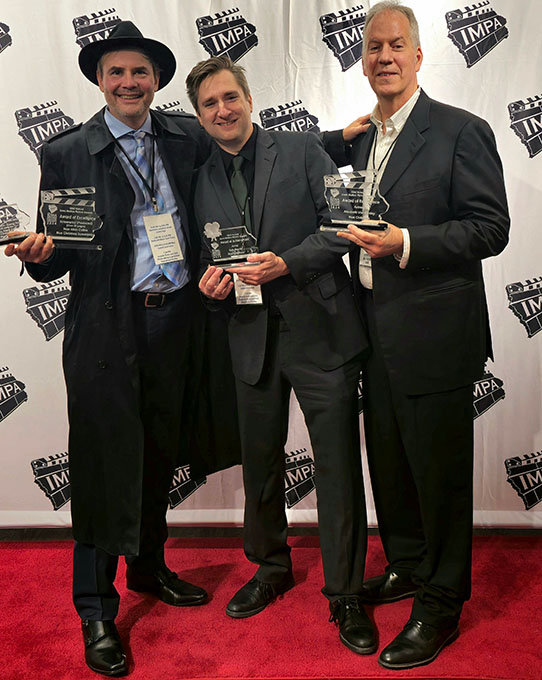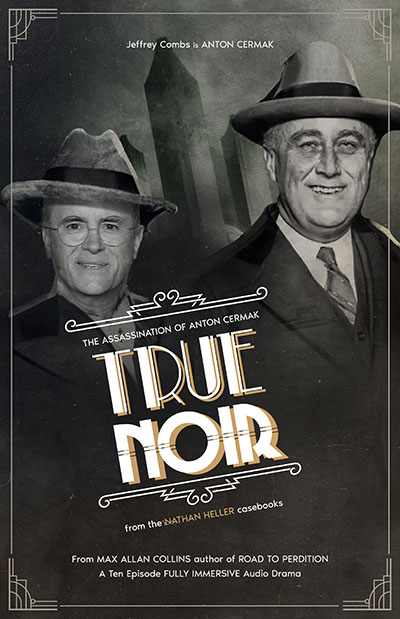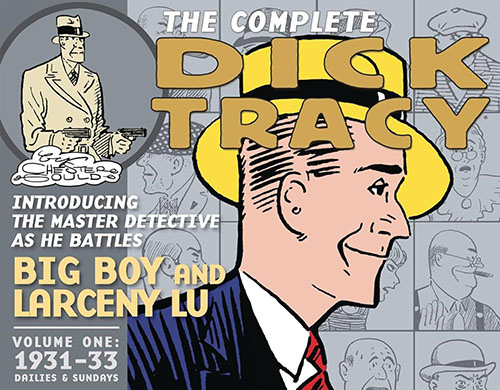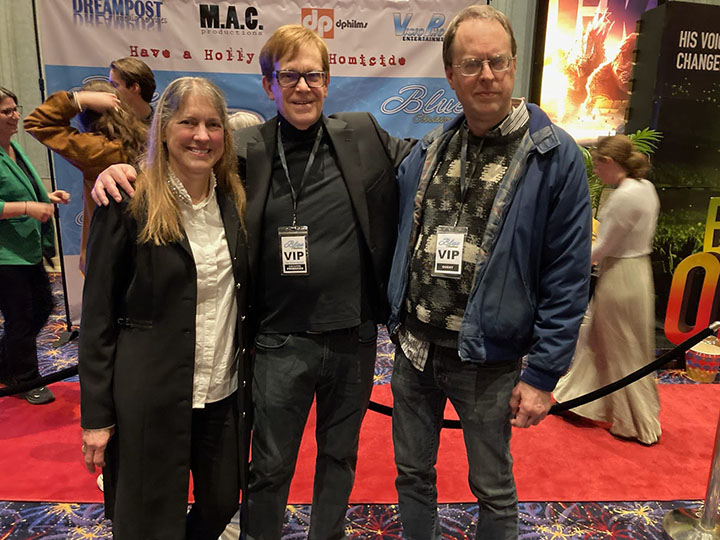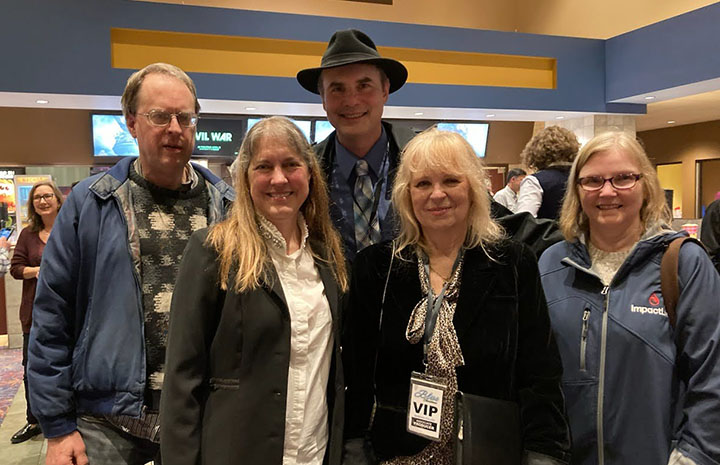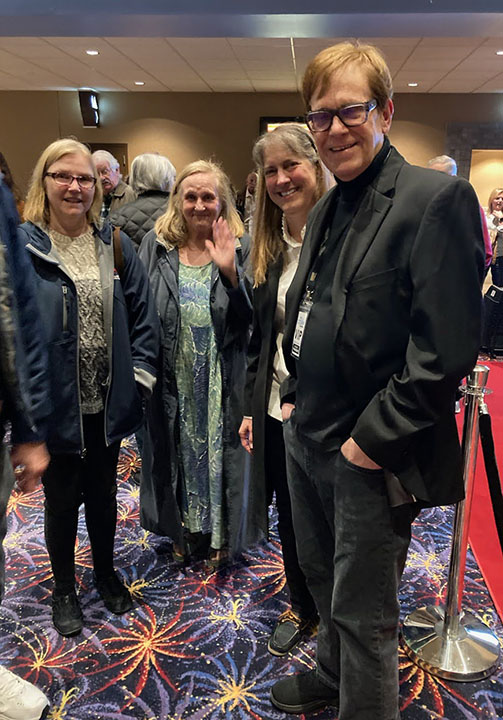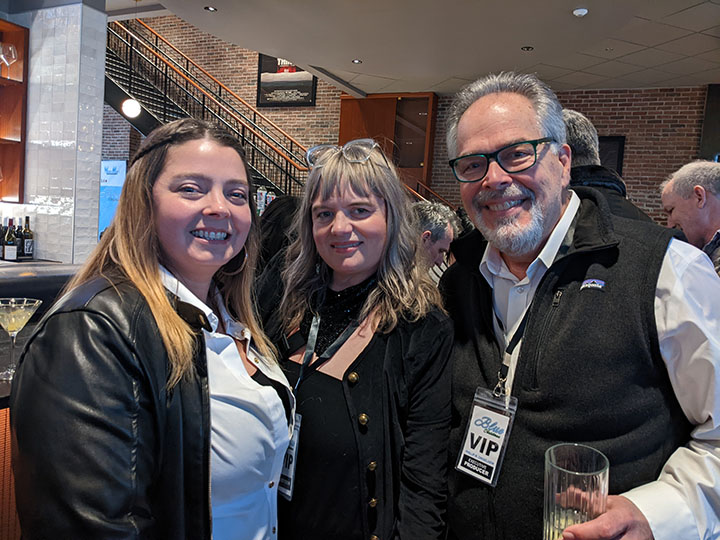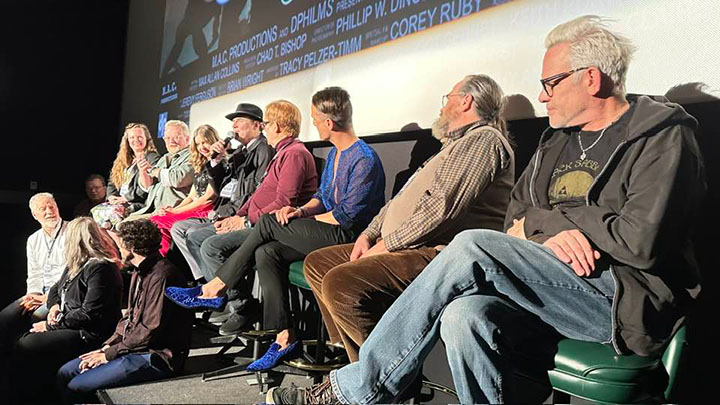I have gotten into the habit of looking at a lot of YouTube of late. Working on a big project like True Noir – the ten scripts for a massive audio production of the first Nathan Heller novel, True Detective (1983) – I find the bite-size offerings that YouTube serves up make ideal late night comfort food. Earlier in the evening, I have usually watched a movie on physical media with either my wife Barb or my son Nate – who comes down from his house up the street after he and his wife Abby manage to get our two grandkids Sam and Lucy to bed – and don’t feel like digging into another feature-length presentation.
The algorithm YouTube uses to generate new offerings on their “recommended” feed – fed by what you last watched and by your subscriptions – means there’s always something new to watch. Unfortunately the flaw is that if you sample something just to get a look at it in the “what’s this about?” sense, you get barraged with material generated by that sampling. Look at one Jordan Peterson video and you’ll get ten more. Look at one Jimmy Carr video and get you swamped in those, but also other “offensive” comedians. Check out Steve Schmidt’s The Warning and receive an avalanche of anti-Trump material. Videos on filmmaking often attract my attention, particularly ones on micro-budget indies.
Sometimes that’s okay. You learn things and at times your interests are fed (as opposed to simply your curiosity). I watched a Ballistics Burgers video and enjoyed it and now I’m on my way to learning how to make a delicious cheeseburger, if I ever get around to trying. And the algorithm thing led me to Robert Meyer Burnett of Robservations and Let’s Get Physical Media, who is now my collaborator on the Nathan Heller audio project, and Heath Holland, whose Cereal at Midnight I am now guesting regularly on (or irregularly – about once a month). Both Rob and Heath are now good and valued friends of mine.
You quickly learn that some of the presenters on YouTube are naturals at it – like Rob and Heath – and others are just guys in their basements with the appeal and communication skills of somebody who just starts talking to you in the supermarket. A YouTube video with a subject that interests you, or just intrigues you, is not guaranteed to include a presenter who ought to be presenting. It’s a democratic landscape, but we all know democracy is messy.
Recently I checked out a few videos purporting to teach novices how to write. I am always willing to learn – after all, I’ve only been doing this since I was in junior high in the early 1960s, and writing professionally since 1971. I have since been bombarded by tips on how to avoid “filter words” (a very popular phrase right now) and words to never use (like “very,” which I just did).
What is disconcerting about these videos – and I’ve sampled a bunch, meaning my YouTube feed will drown me in the damn things for a while – is they feature (A) very young writers…damn, I did it again!…or (B) writers you’ve never heard of, or (C), young writers you’ve never heard of. Many tend to be young woman (under thirty) who speak with clear-eyed confidence in training others how to do what has enabled them to become successful writers. Being a successful writer among these self-appointed teachers of the craft often means they self-publish, though that fact is usually glossed over quickly.
Not all of this advice is good, but neither is it necessarily bad. But who are these people, except up-talking young ‘uns who have no business giving advice to anyone? Never mind, because (as I say) not all their advice is bad, and they often do discuss important topics like writing a good first sentence and whether or not to outline.
The problem, beyond too much self-confidence and an overwhelming desire to fill a YouTube screen with their face, is that fiction writing can’t really, not exactly, be taught. I used to do seminars – for a long time, it was every summer at Augustana College in Rock Island, and a lot of my attendees went on to successfully publish – but I always made the point that fiction writing has no rules, just strategies. No right or wrong, just what works. For you. The individual.
I had tips and shared them. For example, I discouraged opening with a line of dialogue, a practice in which a lot of writers (including published ones, even successful ones) indulge. I would point out to those attending the seminars that opening with dialogue does not tell you enough – you don’t know who is speaking or where they are uttering this supposedly reader-catching bit of fake human speech.
Both opening with dialogue and avoiding doing so, however, are a strategies. Tactics. Not rules.
I have written here before about how useless I consider advice from the likes of Elmore Leonard and Stephen King is to wannabe authors. Not because I think Leonard and King are bad, but precisely because they are good. Better than good. They are great storytellers who have developed their methods by trial and error, and by having grown up as little Leonards and Kings consuming a lot of narrative storytelling, both novels and movies and maybe even the occasional play.
No quick path to learning how to write fiction is available. None. You have to be obsessive about storytelling – wanting to tell stories, wanting to read/see/and-ultimately create stories. But it’s mostly strategy.
What should the first line be? Is the basic story I have in mind better served by first person prose or third person? How is point of view best served in this piece of fiction? The answers to such questions come from the individual writers.

James M. Cain

Mickey Spillane

Donald E. Westlake
James M. Cain taught me to write dialogue (also Jack Webb on 1950s Dragnet). I never met Cain (or Webb), but they taught me by example. Raymond Chandler and Mark Twain schooled me in writing in first person. I came to know – personally know – Mickey Spillane and Donald E. Westlake. But I learned writing action/violence scenes from Mickey and sublime point-of-view technique from Don, long before I met either one outside of the pages of their books.
Some young blue-eyed girl, staring out at you from the television (or “monitor,” to you younger folks) is not going to tell you what a grown-ass woman like Fannie Flagg or even Ayn Rand will. Rand is a good example because she did a lot of things wrong, but also a lot of things right. That kind of successful writer can stimulate thinking along the “I should do this but not that” line. People of less than genius intelligence (like me) can learn more from Harold Robbins in The Carpetbaggers than Marcel Proust in Remembrance of Things Past – particularly when you are starting out to teach yourself in junior high school.
I don’t mean to pick on the females here, because plenty of guys – particularly in the screenwriting area – are turning their own experiences into rules for the easily swayed. I started watching a video where the interviewer was acting like he was in the presence of a real master of the craft – Robert Towne, maybe, or (again) Elmore Leonard – and when the uber-confident dispenser of screenwriting craft’s credit was finally mentioned, the guy had written a Charlie’s Angel movie.
When I was doing seminars, I worked with a lot of young women of all ages who wanted to be romance writers when they grew up (some of these young women were twenty, others sixty with all stops between). They did a lot of things right, in their fiction, and often came together in writers’ groups and helped each other learn and grow. I found then, and believe now, that this kind of thing is positive. Workshops, like the Writers Workshop at the University of Iowa where I fought many battles, gets you down in the trenches with other writers, discussing specifics like plot and character, not “rules,” learning tactics, not “never use adverbs.”
Most of the people telling you never to use adverbs do so in sentences that contain adverbs.
There is only one teacher who can teach you writing: you. The fiction you love will guide the way. Looking at novels and stories (and movies) that are favorites of yours, but doing so in an analytic way, can be helpful. Hitchcock can teach any writer and that isn’t even what he’s trying to do.
Of the young, clear-eyed women teaching others how to write on YouTube (often with pets lurking in the background, scene-stealing), almost none of them discuss first-person writing, or understand that many of the “filter” words to avoid are crucial to writing effective first-person. Barb and I (as “Barbara Allan”) use two narrators in the Antiques novels, neither of whom is a trained writer, which is a great source of fun for us in the books and, we hope, for readers.
One of these very young (“very” again!) writers weighed in on a topic I’ve explored here quite a bit – the wrestling match I sometimes have with editors and even readers about my insistence on describing what a character is wearing. This young writer said she got around that by simply stating something along the lines of “Joe was a sharp dresser” and never describing Joe’s wardrobe again in any way throughout the novel. That’s a choice. A tactic. But I consider physical description and a rundown on wardrobe to be key elements of characterization, at least as I approach it.
That’s all for today. I have Steve Schmidt and Jordan Peterson videos to watch.
The first Quarry’s Return reviewer has appeared and it’s a nice one.
How to read the Nolan books in chronological order.
And Road to Perdition is once again cited as an outstanding film from a comics source.
M.A.C.

